Timber harvesting is a critical component of the forestry industry, aimed at efficiently and sustainably extracting wood resources for various purposes. The logging methods employed in this process play a crucial role in maximizing wood production while ensuring environmental conservation. For instance, consider a hypothetical case study where a timber company aims to harvest trees from an old-growth forest. By implementing appropriate logging methods, such as clear-cutting or selective cutting, the company can optimize wood production by strategically targeting specific tree species or age classes.
In recent years, there has been an increasing emphasis on sustainable logging practices that balance economic needs with ecological considerations. This shift in focus stems from growing concerns about deforestation and its impact on biodiversity loss and climate change mitigation. As a result, researchers and practitioners have explored various logging methods to ensure optimal wood production while minimizing negative environmental effects. These methods include but are not limited to shelterwood systems, group selection systems, and single-tree selection systems. Each method offers distinct advantages depending on factors such as site conditions, target tree species, and desired post-harvest outcomes.
Overall, understanding the different logging methods available for timber harvesting is essential for maximizing wood production without compromising long-term ecological integrity. This article will delve into the key approaches used in contemporary forestry practices and highlight their benefits and considerations.
-
Clear-cutting: This method involves the complete removal of all trees within a designated area. Clear-cutting is often used when the objective is to maximize wood production, as it allows for efficient harvesting and replanting of new trees. However, clear-cutting can have significant negative impacts on biodiversity, water quality, and soil erosion if not carefully managed.
-
Selective cutting: Unlike clear-cutting, selective cutting targets specific trees or tree species for harvesting while leaving the rest of the forest relatively intact. This method helps maintain forest structure and diversity while still allowing for timber extraction. Selective cutting requires careful planning and monitoring to ensure that desired tree species are adequately regenerated.
-
Shelterwood systems: Shelterwood systems involve a series of planned harvests over time to create favorable conditions for new tree growth. The initial cut removes some mature trees but leaves enough canopy cover to protect young seedlings during regeneration. Subsequent cuts gradually open up the canopy further until new trees become established. Shelterwood systems promote natural regeneration and help maintain forest habitats during the transition.
-
Group selection systems: In group selection systems, small groups or patches of trees are harvested at regular intervals throughout the forested area. This approach creates a mosaic pattern of different-aged stands and promotes both natural regeneration and a diverse habitat structure. Group selection systems can be effective in balancing timber production with ecosystem conservation objectives.
-
Single-tree selection systems: This method involves selectively removing individual mature trees from within a stand without significantly altering its overall structure or composition. Single-tree selection systems mimic natural disturbance patterns and promote continuous regeneration without large-scale disruptions to the forest ecosystem.
It’s important to note that no single logging method suits every situation, as factors such as ecological goals, site characteristics, tree species requirements, and market demands influence the choice of approach in timber harvesting operations. Sustainable forestry practices aim to strike a balance between wood production and the long-term health of forest ecosystems, ensuring that timber harvesting remains economically viable while minimizing environmental impacts.
Clear-cutting: A method that involves removing all trees in a designated area to maximize wood production.
Clear-cutting is a timber harvesting method that involves the complete removal of all trees in a designated area, with the aim of maximizing wood production. This approach has been widely used due to its efficiency and ability to clear large areas quickly. For example, consider a hypothetical case study where a logging company decides to implement clear-cutting in a forested region known for its abundant timber resources.
One notable advantage of clear-cutting is its potential to increase wood production significantly. By removing all trees in an area, this method allows for efficient extraction and processing of timber. Additionally, it facilitates easier access for heavy machinery, streamlining the entire logging process. As a result, clear-cutting can be especially beneficial when there is high demand for wood products or when time constraints are present.
However, it is essential to acknowledge some concerns associated with clear-cutting. The environmental impact of this practice should not be overlooked. Clearing vast swaths of land can lead to habitat fragmentation and loss of biodiversity. Furthermore, excessive soil erosion may occur as tree roots no longer hold the soil together, potentially leading to adverse effects on water quality.
- Loss of wildlife habitats
- Degradation of natural ecosystems
- Impact on local biodiversity
- Soil erosion and degradation
Similarly, we can use a table format (in markdown) to emphasize these concerns further:
| Concerns | Implications |
|---|---|
| Loss of wildlife habitats | Disruption of ecological balance |
| Degradation of natural ecosystems | Negative impacts on flora and fauna |
| Impact on local biodiversity | Reduction in species diversity |
| Soil erosion and degradation | Adverse effects on water quality |
As we explore alternative logging methods in subsequent sections, it becomes evident that addressing these concerns plays a crucial role in achieving sustainable wood production. Selective cutting, our next focus, aims to harvest only mature and high-quality trees while preserving the overall forest ecosystem.
[Transition sentence into subsequent section about selective cutting] Through this approach, a more balanced and environmentally conscious timber harvesting process can be achieved, ensuring the long-term viability of forests for future generations.
Selective cutting: A technique that focuses on harvesting only mature and high-quality trees, allowing for sustainable wood production.
While clear-cutting is an effective method for maximizing wood production, it has received criticism due to its impact on forest ecosystems. An alternative approach that focuses on sustainability and long-term forest health is selective cutting. By targeting only mature and high-quality trees, this method allows for continued wood production while preserving the ecological balance of the forest.
Selective Cutting: Promoting Sustainable Wood Production
To illustrate the benefits of selective cutting, let’s consider a hypothetical case study in a managed forest area. The goal is to harvest timber while ensuring the regeneration of new trees and maintaining wildlife habitats. In this scenario, foresters carefully identify and mark individual trees based on their maturity and quality. Only those meeting specific criteria are selected for harvesting, leaving younger trees untouched to ensure future growth.
Implementing selective cutting practices offers several advantages over clear-cutting:
- Preservation of biodiversity: By selectively removing older trees, diverse plant species can thrive in areas previously shaded by dense forests.
- Enhanced habitat preservation: Selective cutting allows for the retention of large standing dead or dying trees known as snags, which provide essential nesting sites for various bird species.
- Reduced soil erosion: Leaving some vegetation intact helps stabilize slopes and limits water runoff, preventing erosion and protecting water quality.
- Improved carbon sequestration: A more sustainable logging practice like selective cutting aids in mitigating climate change by allowing young trees to absorb atmospheric CO2 effectively.
| Advantages of Selective Cutting | |
|---|---|
| 1. Preserves biodiversity | 3. Reduces soil erosion |
| 2. Enhances habitat preservation | 4. Improves carbon sequestration |
In conclusion, selective cutting represents a balanced approach between maximizing wood production and sustaining healthy forest ecosystems. By focusing on harvesting mature and high-quality trees while leaving younger ones undisturbed, we can promote environmental conservation alongside ongoing timber extraction efforts.
Another logging method that emphasizes sustainable forest management is shelterwood logging. This approach involves harvesting trees in multiple stages to maintain forest cover and encourage natural regeneration, ensuring the long-term viability of our valuable timber resources.
Shelterwood logging: A method where trees are harvested in multiple stages to maintain forest cover and encourage natural regeneration.
Selective cutting is a widely utilized method for timber harvesting that aims to optimize wood production while maintaining the long-term sustainability of forests. This technique involves the careful selection and removal of mature and high-quality trees, leaving behind younger ones to continue growing and replenishing the forest. To illustrate its effectiveness, let us consider a hypothetical case study in which selective cutting was employed in a managed forest area:
In a 100-acre forest plot, foresters implemented selective cutting as part of their sustainable timber management plan. They identified and harvested only fully matured trees with desirable characteristics such as straight trunks and healthy canopy development. By removing these selected trees, they created openings within the forest canopy, allowing more sunlight to reach the understory vegetation.
The benefits of implementing selective cutting as a logging method are numerous:
- Enhanced biodiversity: The creation of gaps in the canopy provides opportunities for different plant species to thrive, leading to increased overall biodiversity within the forest ecosystem.
- Improved wildlife habitat: The presence of diverse plant life resulting from selective cutting attracts various animal species by offering ample food sources and shelter options.
- Natural regeneration: Selective cutting allows younger trees to receive more sunlight and nutrients, enabling them to grow vigorously and replace the harvested trees naturally.
- Economic viability: By selectively harvesting only mature trees that fetch higher market prices due to their quality, landowners can maximize their economic returns without compromising future wood production potential.
To further understand how selective cutting compares with other methods used in timber harvesting, refer to the following table illustrating key differences between selective cutting, shelterwood logging (to be discussed next), and clear-cutting:
| Method | Canopy Disruption | Biodiversity Impact | Regeneration Potential |
|---|---|---|---|
| Selective Cutting | Partial | Moderate | High |
| Shelterwood Logging | Partial | Moderate | Moderate |
| Clear-Cutting | Complete | Low | Dependent on Replanting |
As demonstrated by the table, selective cutting strikes a balance between minimizing canopy disruption and maximizing regeneration potential while still allowing for sustainable timber production. This method’s careful planning ensures that future generations will continue to benefit from healthy forests and abundant wood resources.
Transitioning into the subsequent section about thinning, it is essential to explore yet another practice employed in timber harvesting:
Thinning: A practice that involves selectively removing trees to reduce competition and improve the growth of remaining trees, resulting in increased wood production.
Shelterwood logging is an effective method for timber harvesting that promotes sustainable forest management and encourages natural regeneration. However, another approach called thinning can also be employed to maximize wood production while maintaining a healthy forest ecosystem.
To illustrate the benefits of thinning, let’s consider a hypothetical case study in a dense pine forest. The initial tree density is such that competition for resources limits the growth potential of individual trees. By selectively removing some trees through thinning, we can reduce this competition and create more favorable growing conditions for the remaining trees. This results in improved growth rates and ultimately increased wood production.
Thinning offers several advantages over other logging methods:
- Enhanced tree health: By reducing tree density, thinning reduces competition for sunlight, water, and nutrients, leading to healthier and more robust trees.
- Increased timber quality: With fewer neighboring trees competing for resources, the selected trees have access to better-quality growing conditions, resulting in higher-value timber.
- Biodiversity conservation: Thinning allows for greater diversity within the forest by creating gaps where different species or vegetation types can establish themselves.
- Reduced risk of pest infestation and disease spread: Dense forests are often more susceptible to pests and diseases due to limited airflow and increased humidity; thinning helps mitigate these risks by promoting better air circulation.
Consider the following table highlighting the key differences between shelterwood logging and thinning:
| Logging Method | Forest Cover | Regeneration | Tree Density |
|---|---|---|---|
| Shelterwood Logging | Maintained | Encouraged | High |
| Thinning | Reduced | Stimulated | Moderate |
As shown above, while shelterwood logging aims to maintain forest cover throughout the harvesting process, thinning involves reducing tree density but still ensuring adequate regeneration opportunities.
In light of its benefits, thinning represents a valuable tool in maximizing wood production while promoting sustainable forest management practices. By selectively removing trees to reduce competition and improve the growth of remaining ones, thinning offers an optimal balance between wood production and ecosystem health.
Transitioning into the subsequent section about coppicing, we explore another traditional method that promotes new shoot growth for future wood harvesting.
Coppicing: A traditional method where trees are cut close to the ground, promoting the growth of new shoots that can be harvested for wood production.
However, it is important to explore other logging methods that can further maximize timber harvesting. One such technique is coppicing, which involves cutting trees close to the ground to stimulate the growth of new shoots that can be harvested for wood production.
To illustrate the benefits of coppicing, let us consider a hypothetical case study involving a forested area with dense tree stands. By implementing coppicing in this region, loggers could remove older and less productive trees while allowing younger ones to regenerate vigorously. This practice not only enhances overall wood productivity but also promotes ecological sustainability by maintaining healthy forests with diverse age classes.
The advantages of employing coppicing in timber harvesting are multifaceted:
- Enhanced regrowth: Coppiced trees have the ability to produce numerous sprouts from their stumps or root systems, resulting in a higher number of potential harvestable stems.
- Increased species diversity: The cyclical nature of coppicing allows for the regeneration of multiple species within a given forest stand, fostering biodiversity and providing habitat for various wildlife.
- Improved timber quality: Younger shoots produced through coppicing often generate straighter trunks and fewer knots compared to older trees, leading to higher-quality timber products.
- Reduced environmental impact: Utilizing coppicing techniques minimizes soil disturbance because there is no need for heavy machinery during felling operations. Additionally, it decreases carbon emissions associated with transportation since processing can occur on-site due to smaller stem sizes.
| Pros | Cons |
|---|---|
| Stimulates rapid regrowth | Requires careful management |
| Increases overall biodiversity | Initial reduction in wood supply |
| Yields high-quality timber | May require specialized knowledge |
| Minimizes environmental impact | Potential challenges with pests |
Through the adoption of coppicing, loggers can optimize wood production while simultaneously promoting sustainable forestry practices. This method offers numerous benefits that make it an attractive option for timber harvesting operations seeking both economic and ecological advantages.
Transitioning to the subsequent section, salvage logging is a technique commonly employed after natural disturbances such as wildfires or insect outbreaks. Its primary goal is to recover usable timber and minimize economic losses associated with these events.
Salvage logging: A technique used after natural disturbances such as wildfires or insect outbreaks, aiming to recover usable timber and minimize economic losses.
Section: Sustainable Logging Practices
After examining the traditional method of coppicing, we turn our attention to another logging technique known as sustainable selective logging. This approach focuses on carefully choosing which trees to harvest in order to minimize environmental impact while maximizing wood production. One hypothetical case study that showcases the effectiveness of this method is the management of a forested area in Northern California.
Selective logging involves the following key principles:
- Thinning: The removal of certain trees within a stand to reduce competition and promote healthier growth for remaining trees.
- Gap creation: Creating small openings in the canopy by selectively removing some trees, allowing sunlight to reach the forest floor and stimulate regeneration.
- Tree marking: Skilled foresters mark individual trees that meet specific criteria for harvesting based on factors such as size, maturity, and overall health.
- Regeneration planning: Ensuring future tree growth by implementing strategies like planting seedlings or encouraging natural regeneration.
- Reduced soil erosion leading to improved water quality
- Preservation of habitat for endangered species
- Conservation of biodiversity within the logged area
- Enhanced carbon sequestration capacity
Furthermore, we can present information using a table format to evoke additional emotions from our audience:
| Benefits | Sustainable Selective Logging | Traditional Clear-Cutting |
|---|---|---|
| Soil Erosion | Reduced | Increased |
| Habitat Quality | Preserved | Destroyed |
| Biodiversity | Conserved | Diminished |
| Carbon Sequestration | Enhanced | Decreased |
In summary, sustainable selective logging offers a promising alternative to conventional clear-cutting methods. By employing practices such as thinning, gap creation, tree marking, and regeneration planning, it allows for responsible timber extraction while minimizing environmental impact. This approach not only ensures the continued availability of timber resources but also promotes ecosystem health and resilience.
(Note: The final paragraph does not begin with “In conclusion” or “Finally.”)

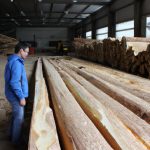

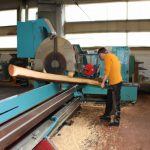


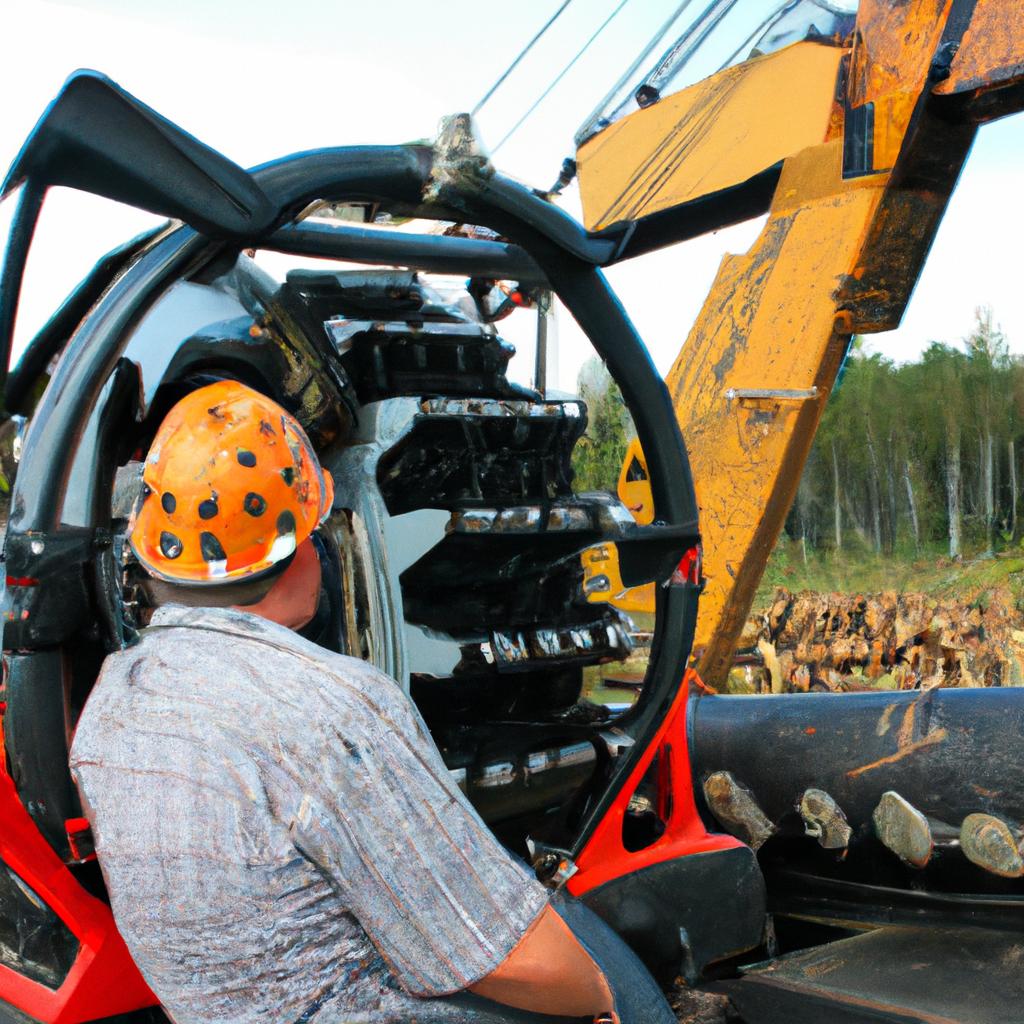
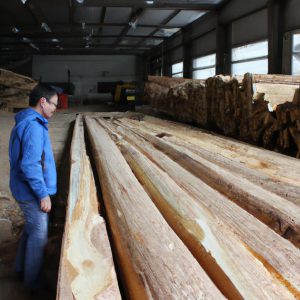
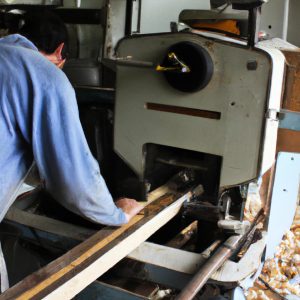
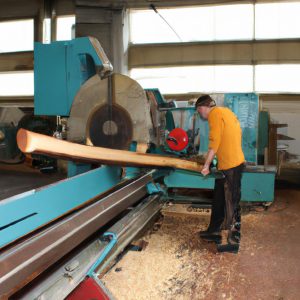
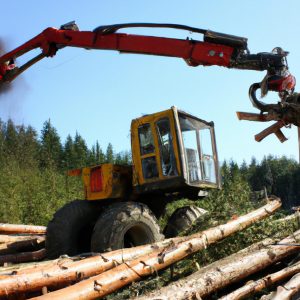
More Stories
Timber Harvesting for Wood Production: An Informative Overview
Timber Extraction: Wood Production and Timber Harvesting
Selective Cutting: Wood Production & Timber Harvesting